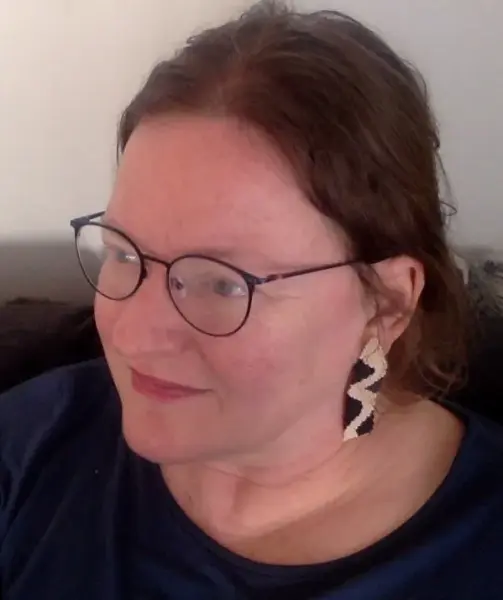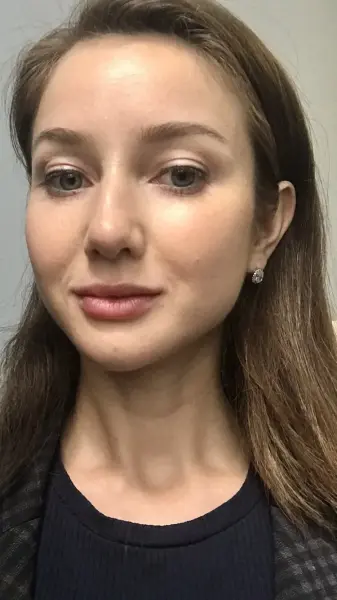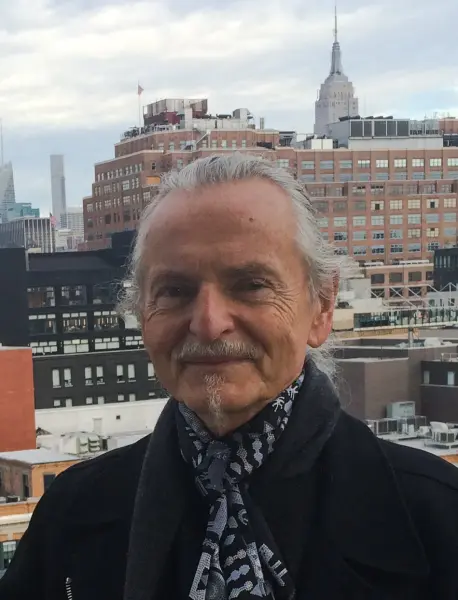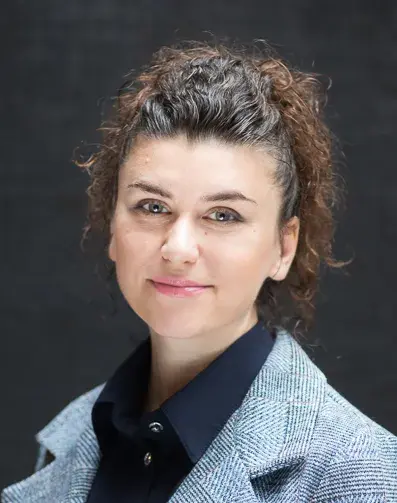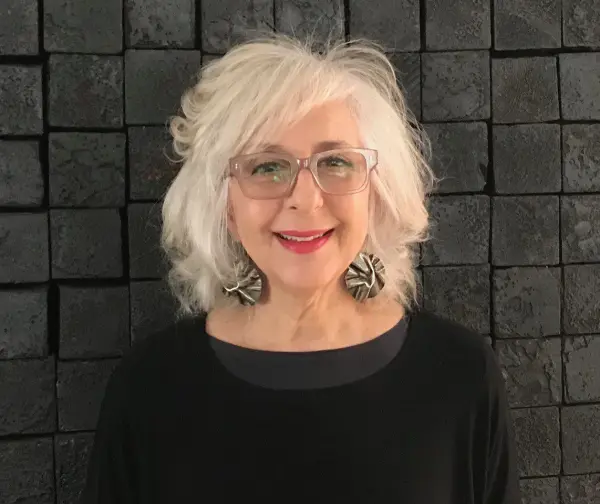Symposium - Babyn Yar, the Holocaust & Beyond: Architectures of Memory
- Talks +More
1pm-5pm
This half-day Symposium begins with scholarly talks about what happened at Babyn Yar and after the massacres, including the dual functions of Herz's synagogue and other memorialization of atrocities, the relationship between Jewish identity and the exteriors/interiors of synagogues and museums in Europe; and how public memorials function.
Event Sponsor: John H. Daniels Faculty of Architecture, Landscape and Design, University of Toronto
Promotional Partner: Toronto Holocaust Museum
Architect Manuel Herz was commissioned by the Babyn Yar Memorial Foundation, in late 2020, to propose a design for a synagogue to be built adjacent to the ravine where, between September 1941 and November 1943, German occupiers of Ukraine with the help of collaborators massacred over 100,000 people -- most of whom were Jewish. In just 5 months, the building was to be dedicated in April 2021, by Yom HaShoah (Holocaust Remembrance Day). The massacres and the synagogue inspired the Koffler Arts exhibition, The Synagogue at Babyn Yar: Turning the Nightmare of Evil into a Shared Dream of Good.
This half-day Symposium begins with scholarly talks about what happened at Babyn Yar and after the massacres, including the dual functions of Herz's synagogue and other memorialization of atrocities, the relationship between Jewish identity and the exteriors/interiors of synagogues and museums in Europe; and how public memorials function.
Welcome
Josh Heuman, Interim Head of Public Engagement, Koffler Arts
Opening Remarks
Matthew Jocelyn, General Director, Koffler Arts
Introduction
Dr. Robert Jan van Pelt, exhibition curator and University Professor, School of Architecture, University of Waterloo
Babyn Yar Holocaust Memorial Center: Memory and Action in Times of War
Dr. Marta Havryshko, Dr. Thomas Zand Visiting Assistant Professor in Holocaust Pedagogy and Antisemitism Studies, Strassler Center for Holocaust and Genocide Studies, Clark University
The Russian aggression against Ukraine impacted Holocaust education, research and memory in Ukraine. The survivors and witnesses of the Holocaust were forced to save their lives by fleeing their homes, and some of them died in suffering, like Wanda Obiedkova, who perished in April 2022, during the siege of Mariupol. Some Holocaust scholars lost their lives, and others are now displaced and refugees. At the same time, Russian aggression destroys and harms places of memory in Ukraine, like Babyn Yar in Kyiv, Drobytskyj Yar in Kharkiv, Jewish cemeteries, and synagogues. Also, we witness abuse and distortion of Holocaust history by Putin’s regime in order to justify its brutal aggression against Ukraine. The presentation addresses the responses of Babyn Yar Holocaust Memorial Center to all these challenges in terms of educational, academic, and humanitarian activities.
The Synagogue at Babyn Yar as a Living Memorial: Commemorating death by celebrating life
Manuel Herz, architect
To build on land that has seen more murder and devastation than most other places on this planet puts the architect under immense responsibility. How do we respect the dead? Can we develop a response that is appropriate to the gravity of the site’s history? Can we offer an alternative to the dominant genre of somber monuments? This presentation unfolds the design trajectory of the Babyn Yar Synagogue and contextualizes it within the broader scope of the architecture of commemoration and religious buildings.
The Symbolic Meaning of Babyn Yar: A Lasting Legacy of WWII and the Soviet Era
Dr. Anna Medvedovska, Senior Research Associate. "Tkuma" Ukrainian Institute for Holocaust Studies, Managing Editor of the journal Holocaust Studies: A Ukrainian Focus, Visiting Research Fellow at the Institute for Advanced Study in Berlin (Wissenschaftskolleg zu Berlin)
Babyn Yar was a site of violence and conflict not just during the Holocaust. After the war, a new stage of its functioning began – as a symbolic concept, tragic and unifying for some, dangerous and undesirable for others. Many events associated with Babyn Yar that took place after the war – attempts at memorialization suppressed by the authorities, unauthorized rallies, arrests and interrogations of Jewish activists and Ukrainian dissidents who took part in those rallies – added new symbolic layers to the history of this location. In independent Ukraine, after the abolition of the Soviet agenda, a number of memorial projects appeared, both implemented and planned, in the historical and cultural space of Babyn Yar. However, the lack of a consistent and agreed upon historical narrative and consensus of ideas about the past presented new obstacles to the process of memorialization.
Identities and Architecture Outside In
Dr. Shelley Hornstein, Professor Emerita and Senior Scholar Architectural History & Visual Culture, York University, Toronto
Jewish museums and synagogues are testimony to the complexity and diversity of Jewish identities. And more than this, these Jewish museums and synagogues are tangible architectural objects on geographic soil. In this talk, I will consider the underexplored aspects of these sites, namely, that however much the inside of a museum or synagogue is important, the introduction to its physicality – the first time we are exposed to these places – precedes how we understand the public message each of these buildings sends. Often thought of as stand-alone architectural sites distinct and detached from their context, I will describe the purposeful and powerful ideas about Jewish identities that these places convey relationally and aesthetically as they engage in a correspondence with other sites, buildings or places around them. This is where, in part, identity forms: from the Outside In.
If a Monument Could Speak...
Krzyztof Wodiczko, Ph.D., Distinguished Visiting Professor in the Department of Fine Arts, University of Pennsylvania; Visiting Professor of Media Arts Department, Academy of Fine Arts, Warsaw; former Director of the Center for Advanced Visual Studies, Massachusetts Institute of Technology; and Professor Emeritus of Art, Design, and the Public Domain, Harvard University’s Graduate School of Design
I will elaborate on one of my projection-animations of public monuments. These projects are participatory appropriations and animations of the motionless and silent city monuments by the voice and gesture of marginalized city inhabitants — themselves living monuments to their own traumatic experience — that inspire and empower them in publicly sharing such experience to be acknowledged as critical and historical, no longer personal and forgotten.
Speakers Panel and Q&A
Dr. Alexandra Karl, Associate Graduate Faculty University of Guelph
Alexandra Karl is an art historian, educator and critic. She earned a BFA at University if Ottawa, an MA at LMU Munich, and a PhD at Cambridge, UK. Karl has published and lectured on a wide range of topics. While living in the US, she intersected with America’s far-right and protested Glenn Beck’s exhibition of Nazi memorabilia. Karl is the creator of Portrait Pebbles, a Holocaust Memorial Project that combines the principles of portraiture with Jewish graveyard stones to enable participants to remember victims of Nazi violence. In 2021, she spoke about Portrait Pebbles for University of Leicester’s conference on ‘Second Generation Visual Artists.’ As an active member of AICA, Karl makes aesthetic judgements all the time.
Respondent’s Summary
Dr. Alexandra Karl


